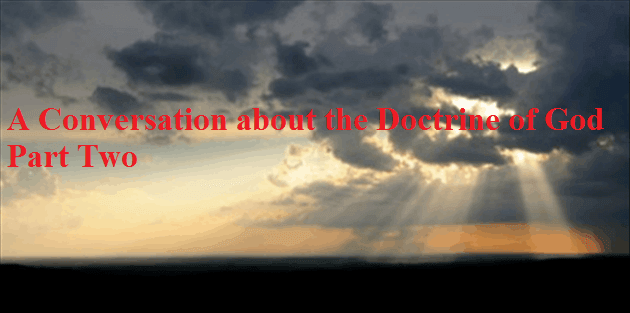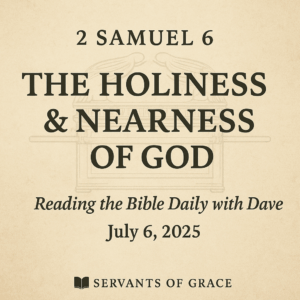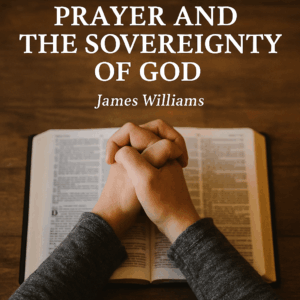⏱️ Estimated Reading Time: 5 min read
Last week we looked at the eternality of God and His complete sovereignty over all things including our salvation. This week I would like to continue our conversation in an effort to worship the ‘God who is’not the God we create in our own image. Today our conversation revolves around the Trinity.
God is one.
The Apostle Paul states, “Therefore, as to the eating of food offered to idols, we know that an idol has no real existence, and that there is no God but one. For although there may be so-called gods in heaven or on earth- as indeed there are many “gods” and many “lords”- yet for us there is one God, the Father, from whom are all things and for whom we exist, and one Lord, Jesus Christ, through whom are all things and through whom we exist.” (1st Corinthians 8:4-6 ESV)
Moses states in Deuteronomy 6:4, “Hear O Israel: The LORD (Yahweh) our God, the LORD (Yahweh) is one.”
Jesus reaffirms this in Mark 12:29 in His response about the Great Commandment: “Jesus answered, “The most important is, Hear O Israel: The Lord our God, the Lord is one.”
Christians are often attacked by outsiders and particularly by people from the Islamic faith for being pluralistic. This is because of the doctrine of the Trinity. Christians, however, are monotheistic, not pluralistic. That is to say, we believe in one God, not three gods. We worship Yahweh and He is a Trinity.
God is a Trinity
Trinity heresies: I will give you a few Trinitarian heresies and the cults that embrace them. This is by no means exhaustive. I just picked the common ones that you may encounter on a more regular basis.
Modalism (i.e. Sabellianism, Noetianism, and Patripassianism) teaches that the three persons of the Trinity are different “modes” of the Godhead. Adherents believe that Father, Son, and Holy Spirit are not distinct personalities, but different modes of God’s self-revelation. A typical modalist approach is to regard God as the Father in creation, the Son in redemption, and the Spirit in sanctification. In other words, God exists as Father, Son, and Spirit in different eras, but never as triune. Stemming from Modalism, Patripassianism believed that the Father suffered as the Son.
This heresy is taught by teachers such as T.D. Jakes and the Oneness Pentecostal movement.
Questions that should arise are, “Who was Christ praying to in the Garden? What was the “Spirit of God hovering over the waters in Genesis? What was the significance of Christ dying on the cross if God the Father did not pour his wrath out on Him for sin?”
Tritheism
Tritheism confesses the Father, Son and Holy Spirit as three independent divine beings; three separate gods who share the ‘same substance’. This is a common mistake because of a misunderstanding of the use of the term ‘persons’ in defining the Trinity.
Mormons are a form (although a modified form because they believe in many gods) of this.
Arianism
Arianism taught that the preexistent Christ was the first and greatest of God’s creatures but denied his fully divine status. The Arian controversy was of major importance in the development of Christology during the fourth century and was addressed definitely in the Nicene Creed.
Jehovah’s Witness embrace this particular theology.
These are what we don’t believe. Now, what DO we believe?
This is my local church’s statement of faith regarding the Trinity:
“There is one true and living God. He created and sustains all things. He is infinite, eternal, unchangeable, and is revealed to us as the Godhead or what is called the “Trinity”. The Bible reveals God as the Father, Son, and the Holy Spirit. These three exist as co-equal, co-eternal, and co-substantial Persons.”
A couple of passages to enforce this:
Genesis 1:2 “The earth was without form and void, and darkness was over the face of the deep. And the Spirit of God was hovering over the face of the waters.”
We have already established God the Father as being eternal. Now it is evident from this text that the Spirit is there because the Spirit is God. Where is the Son? Where is Christ?
Colossians 1:15-16: He [Jesus] is the image of the invisible God, the firstborn of all creation. For by him all things were created, in heaven and on earth, visible and invisible, whether thrones or dominions or rulers or authorities- all things were created through him and for him.”
In John 10:30 Jesus claims, “I and the Father are one.”
The Jews understood his claim to be God in John 10:33: “The Jews answered him, “It is not for a good work that we are going to stone you but for blasphemy, because you, being a man, make yourself God.”
Romans 8:9 make it clear that the Son and the Spirit are one. And John 14: 16, 18, and 23 demonstrate that the Father, Son, and Spirit are one.
I could take you to passage after passage to demonstrate the eternality and unity of God the Father, Son and Holy Spirit. Certainly look to the Gospel of John, specifically in John 1, 10, 14 and 17.
For time’s sake, we need to stop for the day. Next week we will look at one more aspect concerned with our study on the doctrine of God.
Recommended Resources
James White, The Forgotten Trinity.




